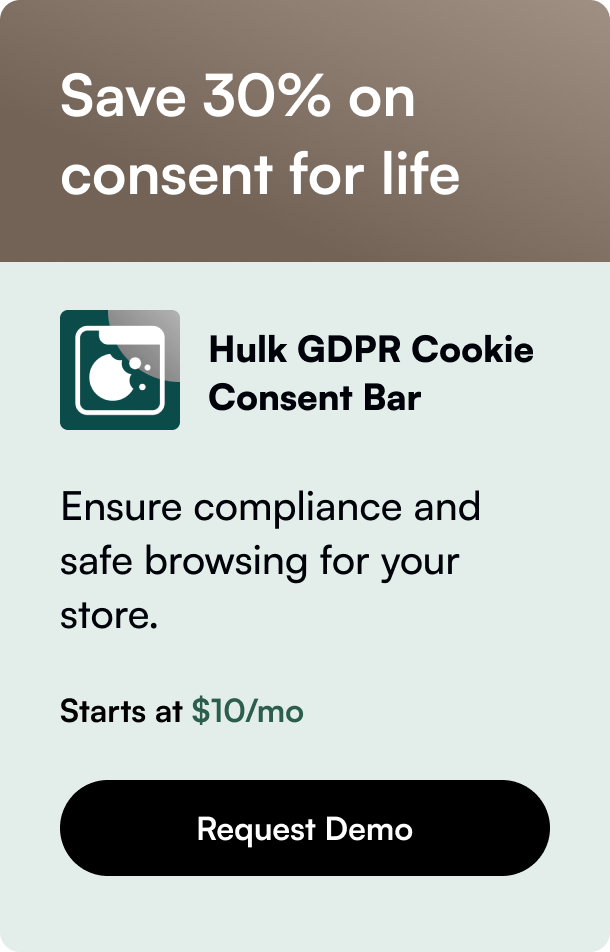Table of Contents
- Introduction
- What is Facebook Pixel & How Does It Work?
- How to Add Facebook Pixel to Shopify?
- Tips & Things to Consider
- Wrap Up
In today's digital age, leveraging every tool at your disposal to track and understand your Shopify store's user behavior is crucial for optimizing your sales strategy. One such indispensable tool is Facebook Pixel, now under the umbrella of Meta. If you're unfamiliar with how to integrate this powerful analytic tool into your Shopify store, you're in for a treat. This guide outlines a step-by-step approach to adding Facebook Pixel to Shopify, topped off with practical tips to enhance its effectiveness.
Introduction
Imagine tapping into a goldmine of data that allows you to see exactly what actions users take after clicking on your Facebook ads. That's exactly what Facebook Pixel offers. Whether it's making a purchase, subscribing to a newsletter, or filling out a contact form, Facebook Pixel tracks these interactions, enabling you to refine your Facebook advertising strategy for precision-targeted campaigns that drive conversions.
Understanding the nuances of how Facebook Pixel can revolutionize your marketing efforts is the first step to unlocking its potential. So, without further ado, let's dive into the hows and whys of adding Facebook Pixel to your Shopify store in 2024.
What is Facebook Pixel & How Does It Work?
At its core, Facebook Pixel is a snippet of code you embed on your website, which collects data on how users interact with your site after clicking on your Facebook ads. This data is crucial for:
- Measuring the effectiveness of your advertising by understanding the actions people take on your site.
- Building custom audiences for future ads, or retargeting people who have taken specific actions on your site.
- Optimizing ads for conversions or building lookalike audiences to expand your reach to similar users.
Facebook Pixel acts as a bridge, delivering insights from your website back to your marketing initiatives on Facebook. This enables a strategic approach to advertising that's data-driven and focused on measurable results.
How to Add Facebook Pixel to Shopify?
Creating Your Facebook Pixel
Before we dive into integrating Facebook Pixel with Shopify, you'll need to create your Pixel if you haven't already:
- Go to your Facebook Ads Manager and navigate to "Event Manager."
- Select "Web" in the "Connect a New Data Source" section.
- Under "Create Pixel," name your Pixel and finalize the creation process.
- You'll then choose how to add the pixel to your website - the focus here will be on using Shopify as an integration partner.
Adding Facebook Pixel Code via Shopify Integration
For a seamless integration:
- In your Shopify admin panel, go to "Online Store" -> "Preferences."
- Scroll to the "Facebook Pixel" section and click on "Set up Facebook."
- This action redirects you to the Facebook & Instagram app on Shopify. Install the app.
- Follow the app's instructions to connect your Facebook Pixel by enabling data-sharing and selecting your data-sharing level.
Adding Facebook Pixel Code to Shopify Theme Manually
If your strategy requires manual addition:
- From the Facebook Event Manager, copy your Pixel code.
- In Shopify, navigate to "Themes" -> "Edit code."
- Insert the Pixel code in your theme's code as directed by Facebook's installation instructions.
Tips & Things to Consider
- Use the correct pixel code for the Facebook ad account you aim to track activities from.
- Install the pixel code on each Shopify store separately if you manage multiple stores.
- Utilize custom audiences and lookalike audiences features for targeted campaigns.
- Configure custom conversions in your Facebook Ads Manager for deeper insight into specific user actions.
Wrap Up
Adding Facebook Pixel to your Shopify store unfolds a realm of possibilities for intricate, data-driven marketing strategies that can significantly uplift your conversion rates. By following the steps outlined and leveraging the tips provided, you're not just installing a tool; you're embracing a culture of actionable insights that can redefine your marketing effectiveness.
Keep experimenting with different configurations, audiences, and conversion tracking to find the sweet spot for your Shopify store. And remember, the world of e-commerce is ever-evolving, so keep your strategies agile and responsive to new data and insights as you grow.
Frequently Asked Questions
Why You Should Add Facebook Pixel to Shopify?
Enhanced ad targeting, improved conversions, and the ability to create custom audiences for precise marketing campaigns are just a few benefits that make Facebook Pixel indispensable for your Shopify store.
What Are The Use Cases of Facebook Pixel for Shopify Stores?
Beyond tracking user behavior, Facebook Pixel can help in retargeting campaigns, optimizing for conversions, creating lookalike audiences, and gaining actionable insights to shape your marketing strategies effectively.
Stay ahead in the digital game, and make Facebook Pixel your ally in navigating the vast landscape of online marketing. It’s not just about adding code; it’s about unlocking potential.







